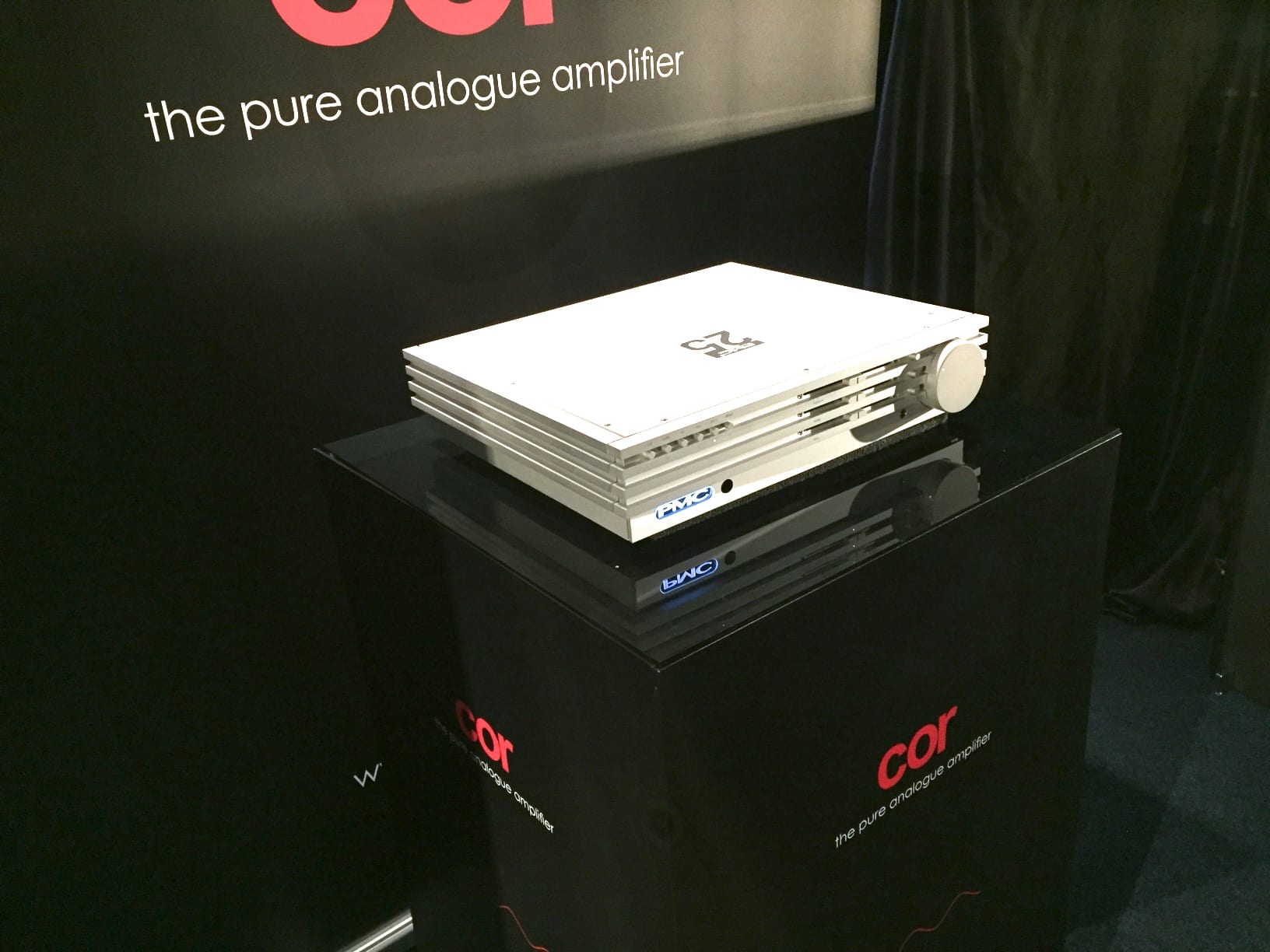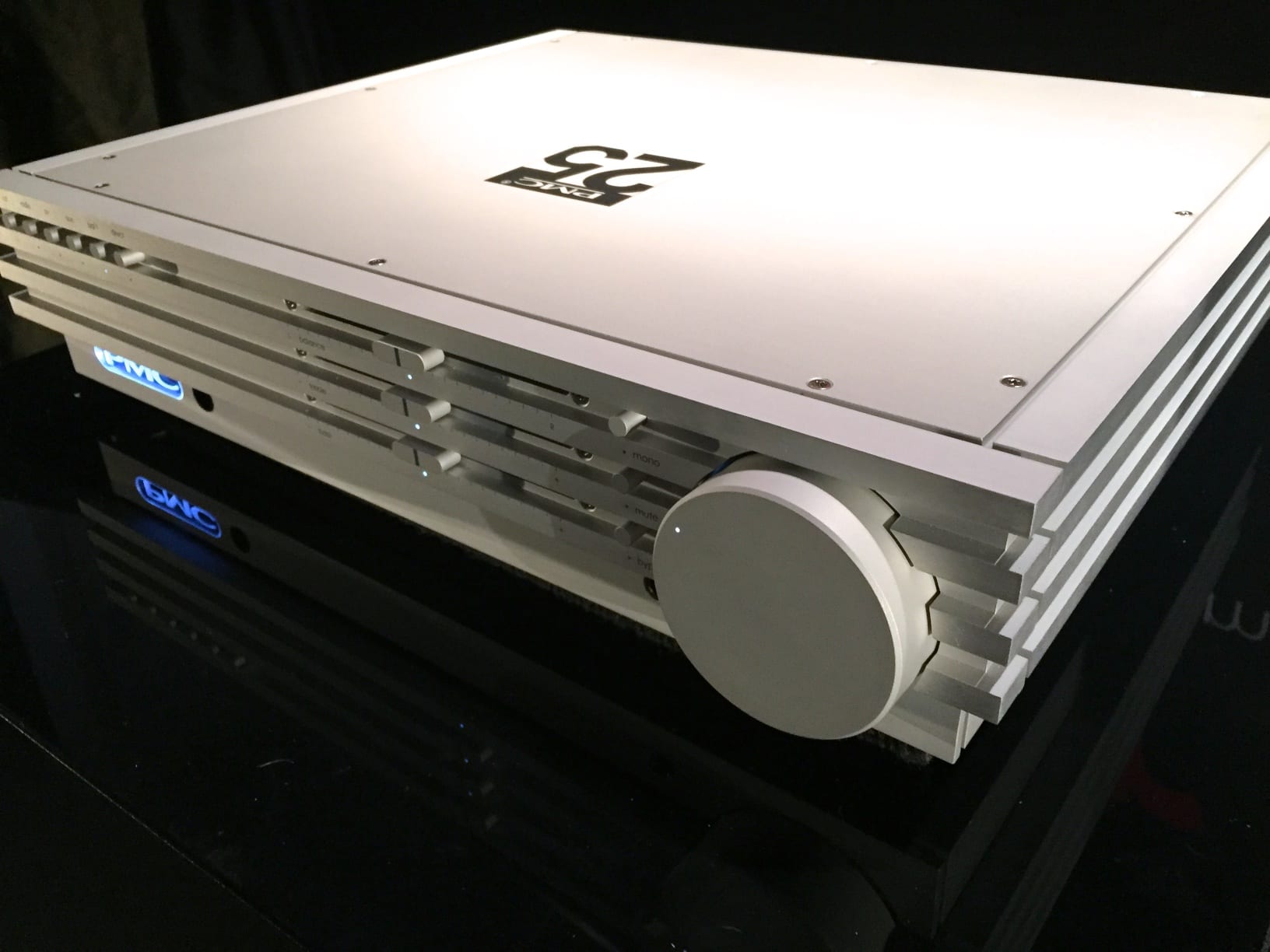Summer gatherings at PMC’s fairly recently acquired and decidedly rural HQ on the outskirts of Biggleswade look like becoming an annual event. Last year it was for the launch of the Twenty5 series of loudspeakers, this time it was a proper opportunity to listen to the new cor amplifier in the land of its birth.
A very structured day it was too. First off was was an explanation by Keith Tonge of the history and the, actually quite surprising, fact that PMC have been making amplification in house from the very first days of their existence. They kicked off by licensing the current dumping design from Quad and then, much to Peter Walker’s bafflement, promptly created power amps rated at 600 watts RMS. These amps are still in use by the BBC at Maida Vale too, so longevity has been proven.
Over time, they have developed their own designs and have, apparently, had a hankering to make a consumer amplifier that can, they feel, get the most out of their loudspeakers. The process that has led to production of cor has taken three years and much of this time has been spent in blind testing various components to achieve the level of transparency that they have been seeking.
Prior to the presentation, we had a chat with their very affable design engineer Elliot Whyte and I confess the first question related to the most contentious issue; the existence of tone controls. Can they be disabled? “Yes”. Can you hear any difference if they are in or out of circuit? “No”.
The decision to have tonal adjustment gradually seemed less and less odd as their intimate relationship with the recording industry kept weaving its way though the discussion. Engineers routinely “EQ” stuff via the mixing desks. Customers often ask for tone controls, so why on earth not just do it properly?
Certainly the motor driven sliders used are of the very highest quality and recordings don’t seem to be routinely ruined by crackly sliders on the mixing desk. Anyway, as mentioned, you can defeat the tone controls.

Amusingly, the one and only amplifier on site was then taken from its acrylic display case to the demo room for us all to hear. Useful test. It certainly seems OK from cold! Currently, there are just two final production samples but the black one was off site when we were there.
Using the Twenty5 26 loudspeakers it certainly acquitted itself well. Could we tell if the tone controls were in our out of circuit? Probably not. Initially, I convinced myself that I could but this certainty faded with repeated swaps. Some ‘difficult’ recordings were played to show us the relevance of being able to make tonal adjustments and I think it was point well made. Moving onto the fact 12s brought the greater resolution and openness, so the little cor (Latin for Heart, soul, spirit) can certainly do the business.
Build looks terrific. It’s all hand built in the UK, casework included and the electronics will be made at the PMC factory in Luton. Even the handset is their own high quality alloy cased affair.
These are hand built products and there is no intention or expectation that they will dominate the market. PMC are a busy enough with loudspeakers in any case. See this as a very high quality product for the discerning.
Our demonstration unit is due towards the end of July and we’re genuinely excited about it.

